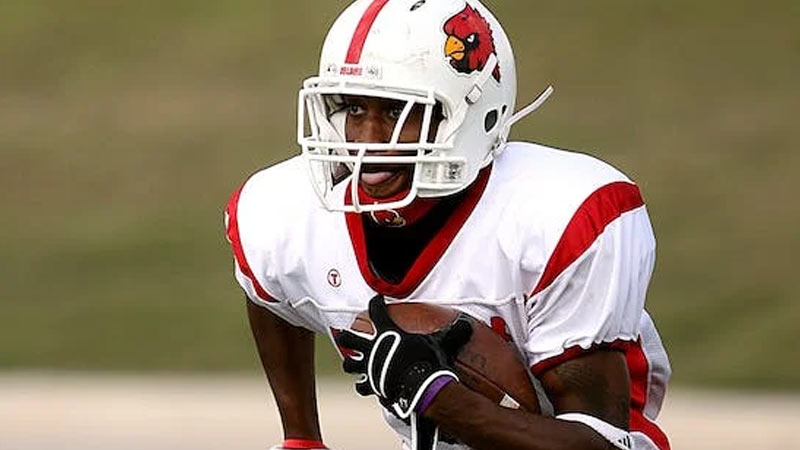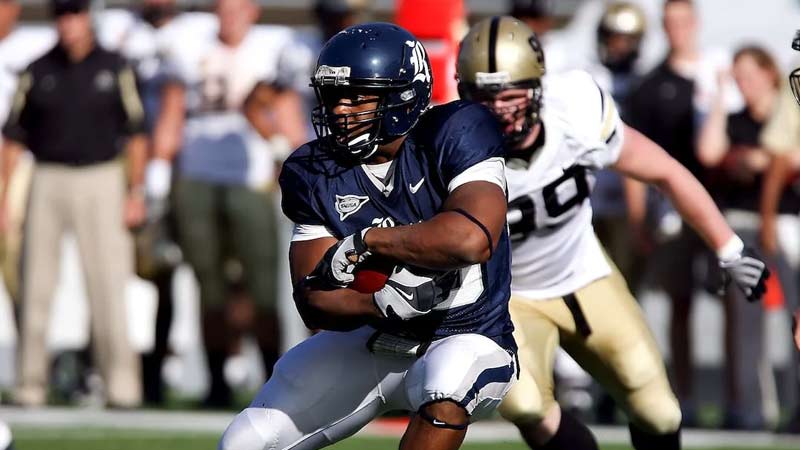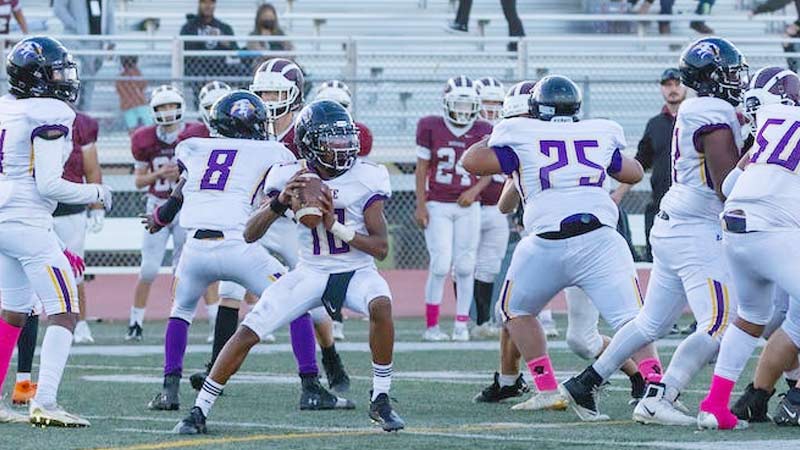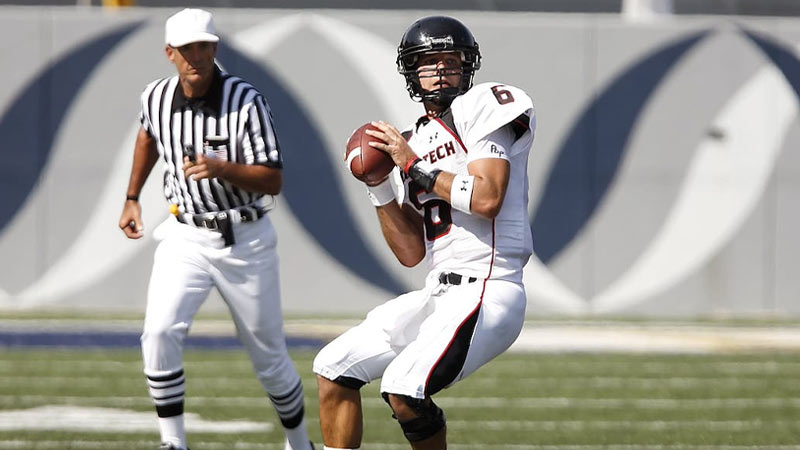In the ever-evolving landscape of football strategies, the hurry-up offense has emerged as a dynamic and game-changing approach.
With its emphasis on speed, communication, and precision, the hurry-up offense has become a potent weapon for teams seeking to catch their opponents off-guard and control the tempo of the game.
In this blog post, we will try to delve into the fascinating world of the hurry-up offense, exploring its principles, strategies, challenges, and risks.
Whether you are a die-hard football fan or a casual observer of the sport, this comprehensive guide will equip you with the knowledge to understand and appreciate the excitement that the hurry-up offense brings to the game.
What Is a Hurry-Up Offense in Football?
A hurry-up offense, also known as a no-huddle offense, is a strategy employed in football to increase the pace of play and catch the defense off-guard. The primary objective is to quickly move down the field and score points by limiting the time between plays.
In a hurry-up offense, the quarterback communicates with the team without huddling, receiving signals from the sidelines, or using hand signals.
This approach aims to keep the defense from substituting players and disrupting their ability to make adjustments. By preventing the defense from regrouping, the offense can exploit potential mismatches and tire out the opposing players.
The hurry-up offense is particularly effective during two-minute drills or when the team is trailing late in the game and needs to score quickly.
Successful execution of the hurry-up offense requires a well-conditioned team, a quarterback with strong leadership and communication skills, and a playbook that allows for quick decisions and execution.
History of Hurry-Up Offense in Football

The concept of a hurry-up offense in football traces back to the late 19th and early 20th centuries. Coaches and teams experimented with quicker play-calling to gain an advantage over opponents.
However, it was Pop Warner, a renowned coach in the early 1900s, who popularized the strategy. Warner’s teams were known for their fast-paced, no-huddle approach, leading to significant success on the field.
Evolution and NFL Integration
As football evolved, so did the hurry-up offense. It gained further prominence in college football during the 1970s and 1980s, with teams like the “Run-and-Shoot” Houston Cougars gaining notoriety for their high-octane, fast-paced offense.
Eventually, elements of the hurry-up offense began seeping into the NFL. Notable NFL coaches, like Don Coryell and Sam Wyche, incorporated hurry-up concepts into their offensive schemes, making it more prevalent in professional football.
The Rise of the Two-Minute Drill
The two-minute drill, a form of hurry-up offense, became a crucial component in late-game situations. Coaches realized that utilizing a no-huddle approach in the final minutes of a half or game could lead to last-minute victories. Legendary quarterbacks such as
Dan Marino and John Elway were masters of executing the two-minute drill. As the strategy continued to showcase its effectiveness, many teams integrated hurry-up elements into their regular offensive plans, becoming a staple of modern football.
Play Calling Options in the Context of a Hurry-Up Offense

In the context of a hurry-up offense, play-calling becomes even more critical, as the goal is to maintain a quick tempo while keeping the defense on its heels.
Here are some key play-calling options commonly used in a hurry-up offense:
No-Huddle Calls
In a hurry-up offense, the quarterback often receives play calls directly from the sideline or from a designated coach through signals or hand signs.
The no-huddle approach allows the offense to quickly line up and run the next play without huddling, catching the defense off-guard and preventing substitutions.
Quick Passes
Short, quick passes are a staple of the hurry-up offense. Slant routes, screens, and quick outs to wide receivers or running backs can help move the ball efficiently and keep the chains moving.
These passes require minimal time for the quarterback to release the ball, preventing the defense from generating a pass rush.
Shotgun Formations
Shotgun formations are commonly used in hurry-up offenses as they allow the quarterback to receive the snap while standing several yards behind the center.
This positioning gives the quarterback a clearer view of the defense and provides more time to read the play before making a quick decision.
Draw and Delayed Runs
Surprising the defense with draw plays or delayed handoffs to running backs can be effective in a hurry-up offense.
These plays use the defense’s aggressiveness against them, creating running lanes as defenders commit to rushing the passer.
Option Plays
Option plays, such as read-options or speed options, can be utilized to add unpredictability to the hurry-up offense.
These plays force the defense to make quick decisions, potentially leading to coverage breakdowns or open running lanes.
Spike and Clock Management
In late-game situations, when time is critical, a hurry-up offense may need to manage the clock effectively.
The quarterback or coach may call for a “spike” to stop the clock quickly after a completed pass, preserving valuable seconds for potential game-winning drives.
Successful execution of a hurry-up offense requires a well-coordinated and disciplined team that can quickly process information, communicate effectively, and make split-second decisions. It puts immense pressure on the defense, making it a potent weapon when utilized strategically.
End of the Game in Hurry-Up Offense

At the end of the game in a hurry-up offense, the situation becomes even more crucial as the offense aims to score quickly and potentially secure a victory or tie the game.
The primary objective is to efficiently move the ball down the field and into scoring range before time expires. Here are some key considerations and strategies employed during the end-of-game situation in a hurry-up offense:
Time Management
Time becomes the most critical factor in the final minutes of the game. The offense must strike a balance between running plays quickly to conserve time and taking enough time to execute plays effectively.
Efficient clock management is essential to avoid wasting precious seconds.
Sideline Awareness
Players, especially the wide receivers and the quarterback, must be aware of the sideline. Getting out of bounds after a catch or run stops the clock, preserving more time for additional plays.
Staying in the field of play can lead to the clock continuing to run and potentially limiting the number of plays that can be run.
Spike the Ball
If the offense cannot get a play-off quickly or needs to stop the clock in a non-passing situation, the quarterback may choose to spike the ball.
Spiking the ball immediately after the snap stops the clock and gives the offense time to regroup without using a timeout.
Two-Minute Drill Execution
The two-minute drill, a specific form of hurry-up offense, is often employed in late-game situations.
The offense must move with urgency, quickly getting set for the next play and gaining chunks of yards through efficient play-calling and execution.
Field Goal Considerations
If the offense is within field goal range but running out of time, coaches may opt for quick, high-percentage passes to move the ball closer to the goalposts.
This strategy maximizes the chance of scoring three points before time expires.
Red Zone Efficiency
In the red zone (the area inside the opponent’s 20-yard line), the offense must be particularly efficient in executing plays. The condensed space requires precise execution to capitalize on scoring opportunities.
No Panic Mentality
Players and coaches must remain calm and composed under pressure. A no-panic mentality ensures that players can communicate effectively, make sound decisions, and execute plays smoothly in the tense end-of-game scenario.
Successfully executing a hurry-up offense at the end of the game requires a well-drilled team, a seasoned quarterback, and a coaching staff experienced in managing late-game situations.
With proper execution and the right play-calling, the hurry-up offense can be a game-changing strategy in securing a comeback victory or tying the game to force overtime.
Strategies and Techniques of Hurry-Up Offense

Strategies and techniques of the hurry-up offense revolve around quick decision-making, efficient communication, and maintaining a fast pace to catch the defense off-guard. Here are some key strategies and techniques used in a hurry-up offense:
No-Huddle Approach
The foundation of the hurry-up offense is the no-huddle approach. Players quickly line up after each play, and the quarterback receives play calls through signals or from the sideline.
This minimizes the time between plays and prevents the defense from making substitutions or adjustments.
Simplified Playbook
In a hurry-up offense, the playbook is often streamlined to include a set of core plays that the team can execute efficiently.
This simplification allows players to process information faster and reduces the risk of miscommunication during fast-paced play.
Pre-Snap Readiness
Before the snap, the offense quickly assesses the defensive alignment and identifies potential weaknesses or mismatches. The quarterback may make audibles or adjustments based on the defensive formation to exploit vulnerabilities.
Use of Formation Variations
A hurry-up offense can use a variety of formations to keep the defense guessing and create favorable matchups. This may involve quickly shifting from one formation to another without huddling, making it difficult for the defense to prepare.
Quick Passes and Timing Routes
Short and intermediate passing routes are commonly used in a hurry-up offense. Timing-based routes, where the receiver and quarterback are synchronized to execute the play quickly, are particularly effective in this context.
Two-Minute Drill Execution
Late in halves or close games, the hurry-up offense often employs the two-minute drill. This is a specific version of the hurry-up offense designed to maximize efficiency and clock management to score points before time expires.
Simulated Snap Counts
The quarterback may use simulated snap counts to keep the defense on edge and potentially draw them offside. Changing the snap count can also disrupt the defense’s timing and rhythm.
Conditioning and Substitution Strategies
Players in a hurry-up offense must be well-conditioned to maintain a fast pace throughout the game. Substitutions are often limited to maintain continuity and prevent delays.
Exploiting Fatigue
As the hurry-up offense wears down the defense and prevents substitutions, it can lead to increased fatigue among defenders. This can create openings and opportunities for big plays as the game progresses.
Maintaining Composure
Communication and focus are crucial in a hurry-up offense. Players must remain composed under pressure, and the quarterback must effectively relay play calls and make quick decisions.
The success of a hurry-up offense relies on a cohesive and disciplined team that can efficiently execute plays, make quick adjustments, and capitalize on defensive vulnerabilities.
When executed effectively, the hurry-up offense can be a powerful tool to gain momentum, control the tempo of the game, and put points on the board in critical situations.
Principles of Football Hurry-Up Offense

Here are the basic principles of football hurry-up offenses.
Tempo and Pace
The fundamental principle of the hurry-up offense is to maintain a rapid tempo and fast pace of play. The offense aims to quickly get to the line of scrimmage, receive the play call, and snap the ball without huddling.
By keeping the defense on its heels, the offense can dictate the flow of the game and potentially catch the defense out of position.
Efficient Communication
Clear and efficient communication is essential in a hurry-up offense. The quarterback must effectively convey play calls to the rest of the team without wasting time.
Hand signals, code words, and non-verbal cues are commonly used to facilitate quick communication.
Simplified Play Calling
In a hurry-up offense, the playbook is often streamlined to a selection of core plays that the team can execute swiftly and effectively.
By reducing the number of plays and formations, players can quickly process information and make split-second decisions on the field.
Clock Management
Time becomes a precious commodity in the hurry-up offense, particularly in late-game situations. Effective clock management is crucial to maximizing the number of plays that can be run before time expires.
Players must be aware of the game clock, use the sideline to stop the clock when needed, and avoid unnecessary delays.
Read-and-React
The hurry-up offense relies heavily on reading the defense and reacting accordingly. The quarterback and skill players must quickly analyze the defensive alignment and make instant decisions based on the pre-snap read.
This includes identifying potential weaknesses, adjusting routes, and adjusting when necessary to exploit the defense’s vulnerabilities.
By adhering to these principles, a hurry-up offense can keep the pressure on the defense, control the momentum of the game, and create opportunities for big plays and scoring drives.
Effective execution of the hurry-up offense requires a well-coordinated and disciplined team that can think and act quickly, making it a potent weapon in a football team’s arsenal.
Challenges and Risks of the Hurry-Up Offense
The hurry-up offense can be an effective strategy, but it also comes with its own set of challenges and risks. Here are some of the main challenges and risks associated with the hurry-up offense:
Fatigue and Conditioning
Running a fast-paced, no-huddle offense demands a high level of conditioning from players, particularly offensive linemen, and skill position players.
The constant running and quick turnaround between plays can lead to increased fatigue as the game progresses, potentially affecting players’ performance and decision-making.
Communication Breakdowns
Efficient communication is crucial in the hurry-up offense, but the rapid pace can lead to miscommunications or misunderstandings between players and coaches.
Mistakes in communication can result in incorrect alignments, missed assignments, and wasted plays, leading to stalled drives.
Lack of Audibles and Adjustments
In a hurry-up offense, there may be limited time for the quarterback to make audibles or adjust plays at the line of scrimmage.
This limitation can make the offense more predictable to the defense, as they may anticipate the snap count and the play based on the tempo and formation.
Defensive Fatigue and Quick Turnovers
While the hurry-up offense tires out the defense, it can also lead to quick turnovers if the offense fails to sustain drives.
A three-and-out possession puts the defense back on the field quickly, potentially exacerbating their fatigue and giving the opposing team more opportunities to score.
Limited Use of the Clock
While the hurry-up offense aims to move quickly, it can also limit a team’s ability to manage the clock effectively, particularly in late-game situations.
If the offense is moving too quickly and not gaining enough yardage, it may leave the opposing team with too much time to mount a comeback.
Dependency on Successful Execution
The hurry-up offense heavily relies on the precise execution of plays. If a team is not executing well, with dropped passes, missed blocks, or inaccurate throws, the offense can quickly stall, putting the team’s defense back on the field without giving them enough rest.
Injuries and Lack of Substitutions
In a hurry-up offense, substitutions may be limited to maintain a fast pace. Players may have less time to recover from minor injuries or fatigue, increasing the risk of injuries and the potential loss of key players during a critical juncture of the game.
While the hurry-up offense can be a game-changer, teams must carefully balance its implementation and be aware of the challenges and risks involved.
Proper conditioning, communication, and strategic play-calling are essential to mitigating these challenges and maximizing the potential benefits of the hurry-up offense.
FAQs
What is the hurry-up offense in football?
The hurry-up offense, also known as the no-huddle offense, is a strategic approach in football where the offense quickly moves down the field without huddling between plays.
The objective is to keep the defense off-balance, prevent substitutions, and exploit mismatches, ultimately increasing the chances of scoring points rapidly.
How does the hurry-up offense work?
In a hurry-up offense, the quarterback receives play calls directly from the sideline or through signals, eliminating the need for a traditional huddle. The offense lines up quickly, and the quarterback communicates the play to the rest of the team.
The fast pace aims to keep the defense on its heels, allowing the offense to run more plays and potentially tire out the opposing defenders.
What are the key principles of the hurry-up offense?
The hurry-up offense relies on maintaining a rapid tempo, efficient communication, a simplified playbook, and precise execution.
It involves pre-snap readiness, quick decision-making, and a focus on clock management in crucial situations.
What are the challenges of running a hurry-up offense?
Running a hurry-up offense can lead to player fatigue, communication breakdowns, limited use of audibles, and potential defensive exhaustion if the offense fails to sustain drives.
The fast pace also requires players to be well-conditioned and may limit substitutions.
When is the hurry-up offense most effective?
The hurry-up offense is particularly effective in two-minute drills, late-game situations, or when a team needs to mount a quick comeback. It is a powerful weapon when the offense requires rapid scoring or maintaining momentum.
Wrapping Up
The hurry-up offense has become an integral part of modern football, revolutionizing the way teams approach the game. Its emphasis on speed, efficiency, and precision has led to thrilling moments and remarkable comebacks on the gridiron.
Understanding the principles, strategies, challenges, and risks of the hurry-up offense provides a deeper appreciation for the dynamic and captivating nature of the sport.
As teams continue to innovate and adapt, the hurry-up offense remains an exhilarating and effective tactic that keeps fans on the edge of their seats.
So, next time you watch a football game, keep an eye out for the electrifying moments that unfold when the hurry-up offense takes center stage. Thank you for your time.







